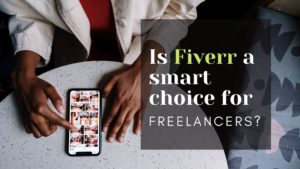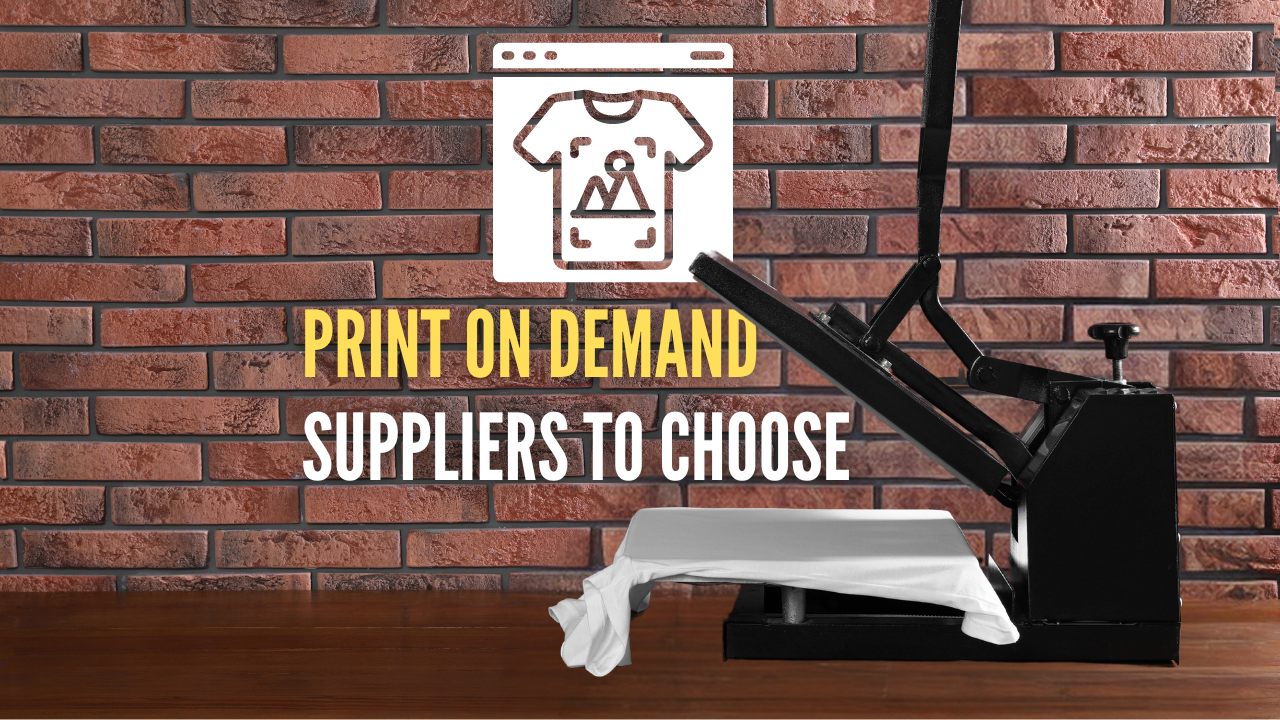
Whether you’re an artist, writer, designer, or entrepreneur, physical products can serve as an ideal means to monetize your creativity.
From t-shirts to posters, tote bags, and books, you can customize everyday products and sell them online. However, by following the usual method of ordering and managing your own stock, you might end up with a stack of unsold products on your hands.
Introduction
Print On Demand services offer a clever way to bypass the time and money investment as well as the risks associated with managing physical inventory. They allow you to move beyond product creation and start selling personalized items while being mindful of your budget.
What is Print On Demand and how does it work?
Print on Demand, or POD, is a process where you collaborate with a supplier to customize white-label products (caps, mugs, t-shirts, books, etc.) with your own designs and graphics, selling them on demand under your own brand.
This means you only pay for the final product after it’s been sold, eliminating the need to buy in bulk or manage a stock of products.
Furthermore, with Print On Demand services, all post-sale stages, from printing to shipping, are handled by your supplier. Once set up, it only takes a few clicks to fulfill an order after a sale is made.
You can use Print On Demand services to:
- Test a business idea or a new product line within an existing venture, avoiding risks associated with purchasing a product inventory.
- Monetize an audience you’ve built. Print On Demand is an excellent option for YouTubers, illustrators, or social media influencers looking to focus on content creation rather than order fulfillment.
- Create original products for a niche audience—such as personalized clothing for the gaming community.
- Easily print unique items on a single-unit basis—print on demand t-shirts, books, shoes, bags, wall decorations, phone cases, mugs, caps, and much more. These items can not only be sold online but also used to promote your brand.
- Start a home-based, 100% online business with no inventory to manage.
The advantages and disadvantages of Print On Demand

Print On Demand services can serve as a lever to build an online business based on the dropshipping model, where products and shipping are managed by a third party. It’s one of the most accessible means to source products or start an online store—but it’s important to understand its advantages and limitations before committing.
Advantages
- Rapid product creation: Once you have the design, you can create and list the product for sale within minutes.
- Shipping taken care of: Shipping and fulfillment are handled by your Print On Demand supplier. After a sale, you’re only responsible for customer service. Reduced investment,
- reduced risk: With no physical inventory, it’s easier to add or remove products, test ideas, or change approaches.
- Work from anywhere: Print on Demand without a store means you can manage your business from home or anywhere globally, as long as you handle orders and manage your business. Digital nomads love this!
- Boost creativity: Always dreamt of living off your creations? If you enjoy drawing, photography, or graphic design, you’ll love seeing your DIY and personal creations printed on various items of your choice and sold! Ever thought about having your designs printed on Print on Demand T-shirts?
Disadvantages
Lower margins: Naturally, the per-item cost will be higher than the unit cost of bulk orders. Products sold on demand might result in thinner profits, depending on how you set prices and acquire customers.
Less control over shipping: Shipping costs can significantly vary depending on the product type. Your options might be limited if you aim to create a remarkable unboxing experience.
Limited customization control: Your ability to personalize products depends on the supplier and the type of printed article. Consider weight-related costs, customization options, printing techniques, and available sizes when choosing products from a Print On Demand provider.
5 Print On Demand Suppliers for Creating Custom Products
- Printful
- Printify
- T-Pop
- Tunetoo
- Gooten
While many Print On Demand services might seem similar at first glance, your choice will depend on the products you want to create, where they’ll be shipped, and the retail prices you’ll set.
For instance, a low per-unit cost might seem like an obvious choice until you realize it would take 21 days for customers to receive the products with the most affordable shipping option available.
Pay attention to details when assessing different Print On Demand platforms. To assist you, we’ve compiled some of the most popular Print On Demand services to cover a variety of scenarios. All these services allow for free account setup (you only pay when you order a product) and integrate with Shopify.
Note: This list is not exhaustive. To discover more POD services, visit the Shopify App Store.
1. Printful
Printful (Shopify App) is a popular choice among Print On Demand services due to its wide range of products and brands, intuitive mockup generators, and branding options that allow you to add your own touch to the unboxing experience with stickers, packaging inserts, and personalized notes.
For clothing specifically, the Print On Demand provider Printful offers several printing techniques. Here are a few to consider:
Direct-to-Garment (DTG) printing: Prints directly onto the material, suitable for minimalist designs (e.g., humorous t-shirt patterns). It’s possible to print only on certain parts of the product as a consequence.
Embroidery: Probably the most complex printing technique, as the final garment includes a sewn motif with a 3D effect. This technique works better for relatively simple designs with only a handful of colors, especially for products like hats that often feature embroidered designs.
While Printful is particularly appealing for clothing, this Print On Demand provider also supports printing on items such as mugs, pillows, cushions, beach towels, aprons, and more.
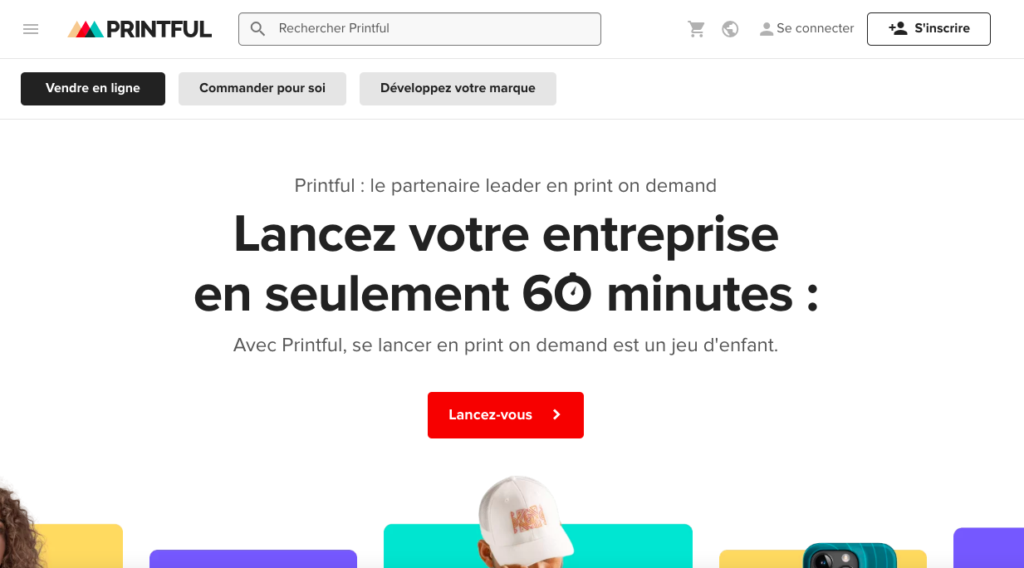
2. Printify
Printify (Shopify App) is another Print on Demand provider that offers a selection of T-shirts and hoodies.
However, one notable aspect about Printify is its international network of suppliers, allowing the sale of numerous white-label products that are challenging to find elsewhere—jewelry, clocks, shoes, water bottles, etc. In fact, the platform offers over 200 products available for printing.
Printify is free to use, but if your online store grows rapidly and you want to enhance your margins, the premium plan, at $29 per month, provides a 20% discount on all products.
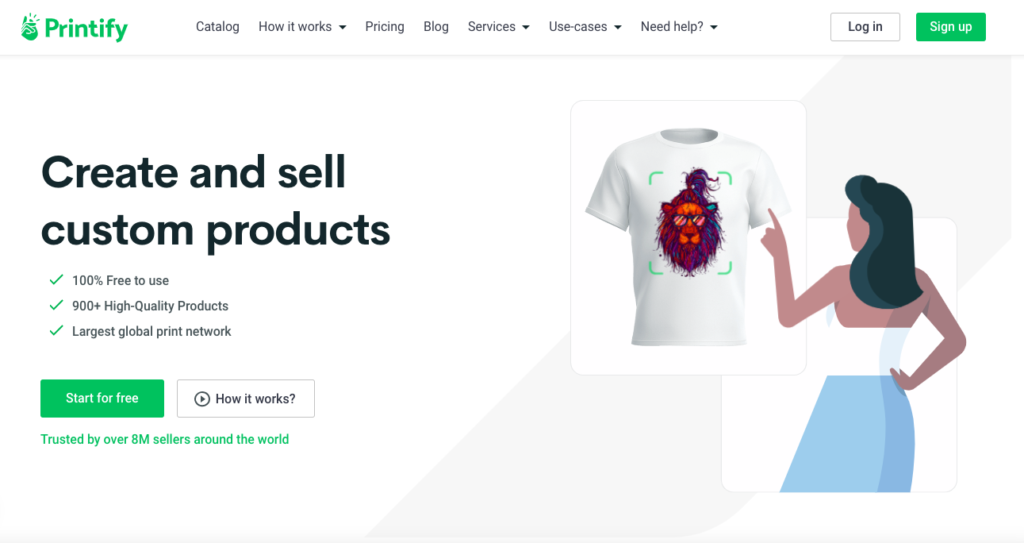
3. T-Pop
If you’re looking to launch an eco-conscious Print on Demand store, it’s entirely feasible with T-Pop (Shopify App). The platform offers environmentally friendly products, plastic-free delivery, printing inks certified by Oeko-Tex, GOTS, and VEGAN, and carbon-neutral delivery service.
Beyond this responsible commitment, T-Pop offers excellent branding options. You can place your logo on the package and invoices, add a thank-you note, and display your various social media handles—all for free!
Budget-wise, there’s no stress; the platform is free, and you’re only charged when your products are shipped.
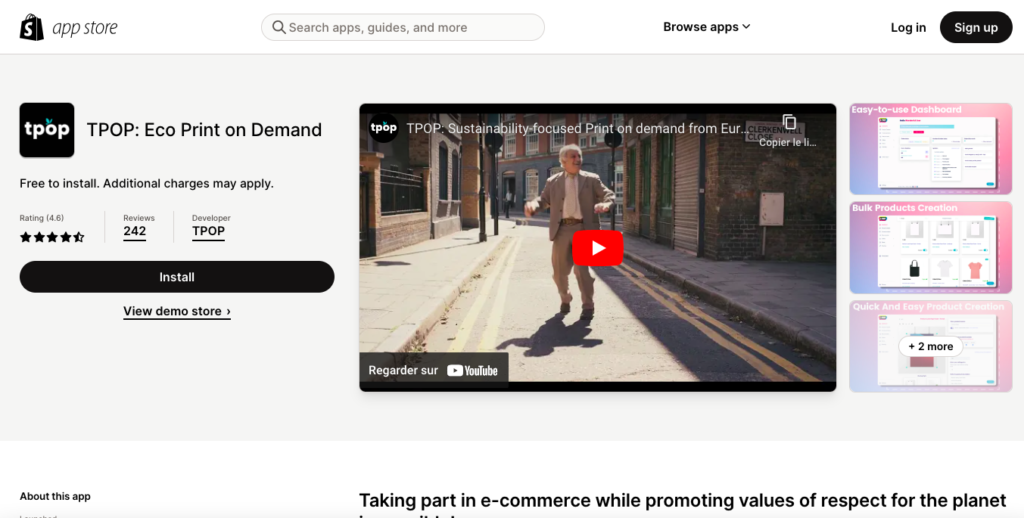
4. Tunetoo
Tunetoo’s website (Shopify App) boasts a catalog of customizable products with a vast selection of over 450 references. They offer print-on-demand T-shirts, beanies, aprons, robes, and more. To ease your design process, if you’re yet to finalize your design ideas, Tunetoo allows you to browse through their image bank.
However, Tunetoo holds many other advantages. Besides providing a Made in France service (all markings are done in the Bordeaux region), Tunetoo allows you to choose from multiple marking techniques: printing, flex, and embroidery!
Finally, Tunetoo assists its customers in creating their online stores.
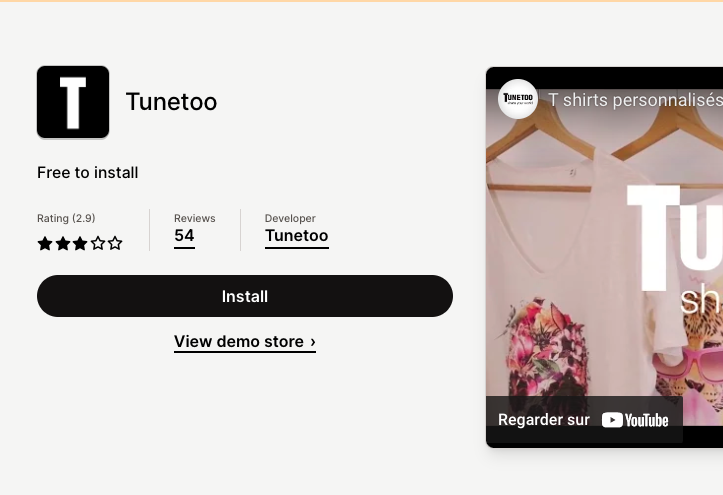
5. Gooten
Similar to Printful and Tunetoo, Gooten (Shopify App) offers a wide range of customizable products. Several Gooten products are exclusive and only available through its platform, such as bandanas and dog beds.
Note that Gooten relies on an international network of print-on-demand suppliers to print its products (they serve over 70 sites worldwide), hence there might be disparities in product quality and shipping. However, this also means you can find lower product prices and shipping costs by identifying suppliers near the majority of your shipping destinations.
Additionally, Gooten provides an intuitive image editor that gives you an accurate preview of your final product’s appearance.
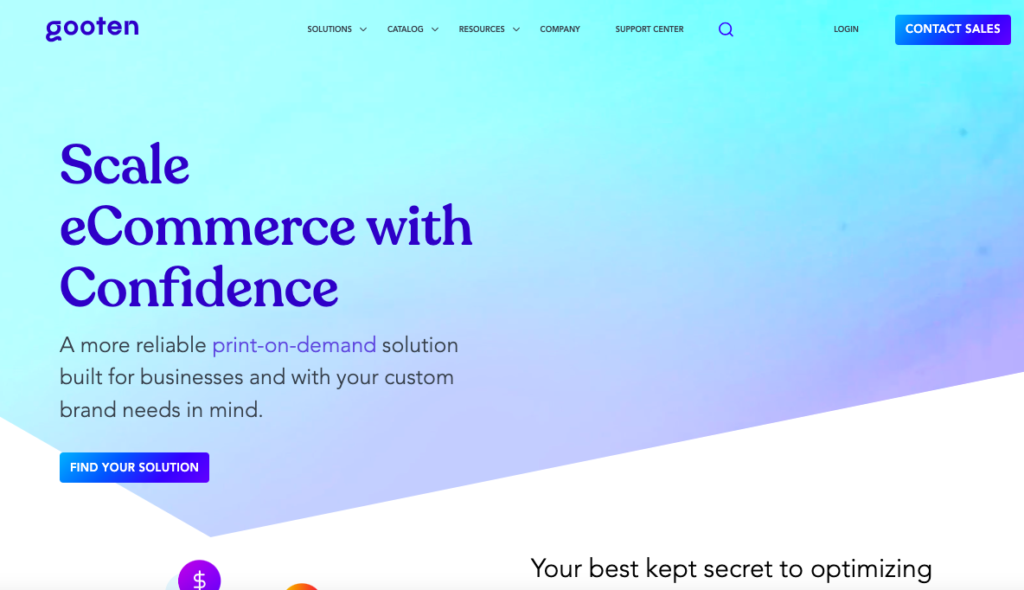
Designing Without Being a Graphic Designer
It goes without saying that design plays a crucial role in creating successful print-on-demand products. However, being a professional graphic designer is not necessarily a prerequisite to finding original designs. There are various ways to obtain designs from third parties or create your own. To do this, you need to understand some key concepts that will help you work effectively with experienced graphic designers.
Firstly, you’ll need to prepare your print file. When collaborating with graphic designers, specify that your design is intended for printing. This will allow them to consider all the requirements related to this type of printing, such as ensuring the file ideally comprises 300 dots per inch (DPI) and has a transparent background.
Note that the print file specifications will depend on the printer and printing technique used. If in doubt, provide the designer with the print specifications for the specific product, along with any relevant printing instructions, to help them better understand the context.
The patterns you upload to print-on-demand platforms should be large enough for the actual print area of the product or even larger—resizing a small image to a larger size will result in a loss of quality. If you don’t have access to Photoshop, you can use Pixlr (free) or any other photo editing tools available.
Where to Find Design Ideas and Designers?
Perhaps you’re skilled in design yourself, or maybe you know someone to collaborate with. But don’t get discouraged if you don’t have someone in mind yet.
You can find designers to collaborate with on platforms like Behance, 99 Designs, or other freelancing sites—these designers can produce functional designs as long as you provide clear instructions.
Here’s how you can add clarity and context to a design project:
- Share details about your audience. Explain to the designers why you’re creating the product and who it’s intended for. Showing them your website, if you have one, can also be helpful.
- Clearly explain what you want. Be specific and precise when explaining what you’re looking for and the guidelines to follow. Don’t hesitate to go into details and try to provide concrete feedback at each stage of the process.
- Provide examples as inspiration. Give the designers a reference to base their designs on or point them to a past project you liked.
There are numerous talented graphic designers out there, and it shouldn’t be too challenging to find someone to bring your ideas to life. The challenge might rather be figuring out what to design in the first place.
This will depend on the target audience for the product. But we suggest seeking inspiration from:
- Facebook pages
- Wherever your potential customers spend time online
You should search for content, messages, or styles that already resonate with your target audience so you can brainstorm ideas that have potential. Just make sure to never use content created by others.
Social media is also a great environment to test your ideas.
To generate online discussion groups, you can:
- Post in your personal Facebook network or groups.
- Use the Poll and Question stickers in Instagram Stories to solicit feedback.
Tips for Starting a Print-On-Demand E-commerce Site
Using a print-on-demand service may be simpler than managing your own product stock. However, certain aspects specific to this model need consideration. Fortunately, there are creative solutions to help address the challenges you might face.
1. Always Order Samples
Ensuring the quality of products when using print-on-demand services is essential. There’s always a risk that the printed design on your product might not perfectly match the initial digital design. However, you can contact the customer support of your print-on-demand supplier to get advice on how to resolve any issues that arise.You need to ensure your final physical product meets your expectations.
The best way to do this is to consider yourself a customer and experience firsthand the process of ordering your item from your online store. Some services, like Printful, even offer discounts up to 20% on samples or free shipping. Make sure to take advantage of such offers if available.
Besides attesting to the product quality, samples will also serve you when taking product photos for your website and social media.
2. Be Strategic About Shipping
Even if you’re not handling the shipments yourself, shipping remains a significant consideration. You need to account for delivery times and costs while meeting customer expectations.
Consider printing lead times when contemplating shipping. Regardless of delivery times, ensure you add between 2 and 4 days for production, or longer depending on the product.
Always be transparent about shipping times to avoid being inundated with customer inquiries. Describe on your FAQ page what customers should expect or consider creating a separate Shipping page to detail the shipping process for customers.
If possible, try to partially or fully incorporate shipping costs into your selling price. Studies continually show that unexpected shipping fees added at checkout can deter customers from making purchases.
Note also that free shipping strengthens certain marketing efforts:
- Free shipping is an excellent incentive to boost sales as it gives customers an extra reason to purchase.
- Conditional free shipping (e.g., “Get free delivery for orders of €30 or more”) encourages customers to add more items to their carts to reach the specified order threshold. It generally allows you to benefit from a better overall shipping rate as you deliver all items in a single package.
- You can use the offer of free delivery to justify longer wait times. Most consumers won’t mind waiting a little longer if they know they’re saving money on shipping fees.
3. Create Mockups Showcasing Your Products
While real models can help take attractive photos of your products, mockups are a practical alternative to add substance to your product pages.
Many print-on-demand services assist you in creating your own mockups, showing your products on a person by default or in a flat format. However, other services and numerous free mockup templates can also bring life to your products.
These mockups will help sell your products to customers. Feel free to invest in attractive mockups if you have a sufficient budget. PlaceIt is an intuitive mockup generator allowing you to create photo and video mockups at $8 each. Alternatively, if you’re familiar with Photoshop or other photo editing tools, you can browse Mockup World or Behance for free templates to work with.
4. Focus on a Niche to Simplify Marketing
The success of your business relies on your marketing. However, if you try to sell to everyone, you won’t target anyone specifically. That’s why it’s crucial to specialize, regardless of the tactics you use.
By clearly defining your audience (e.g., dog owners), you’ll be better able to create products highly sought after by your target audience, reduce customer acquisition costs, and maximize potential profits as your prospect targeting decisions will be more precise.
Moreover, if you manage to build an audience through your marketing efforts, you’ll create a permanent asset for your business, even if your products change.
Although there are countless marketing approaches to test, here are some ideas to start:
- Start an Instagram account and create/select content for your target audience. Accumulate followers and build relationships with potential customers.
- Run Facebook ads targeting the interests of your prospects. Use Facebook ads to test your designs from €10 to identify the designs that resonate most with your audience.
- Collect email addresses from visitors to your e-commerce site to continue presenting them with your promotions for free.
- Send your products to influencers who, with their community reach, can bring awareness and credibility to your brand.
Building an audience composed of your target customers is essential for creating a sustainable business, whether in print-on-demand or any other business model.
For more marketing ideas, make sure to check out our guide: Earn money on the Internet: 30 ideas to make money
5. Create an Online Store that Represents You
Creating a Shopify online store is indeed the highlight of your print-on-demand business: you’ll be able to create an attractive design based on an easily customizable theme, tell your story with your storytelling and values, and, of course, create product listings for each of your print-on-demand products. Do research and get inspired by the best Shopify stores. Don’t forget to work on the SEO of each of your pages. Many Shopify apps are available to help you make your online store more efficient and encourage sales. Shopify’s app store has many apps that allow you to connect your store to numerous print-on-demand suppliers.
If your business idea gains traction and you start generating a significant volume of sales, you can then consider transitioning from a print-on-demand site to a traditional e-commerce site where you’ll manage your own product stock.
Design, test, sell, and grow your business
Print-on-demand services provide an accessible source of inventory for new entrepreneurs or anyone wanting to test an idea before investing more resources.



